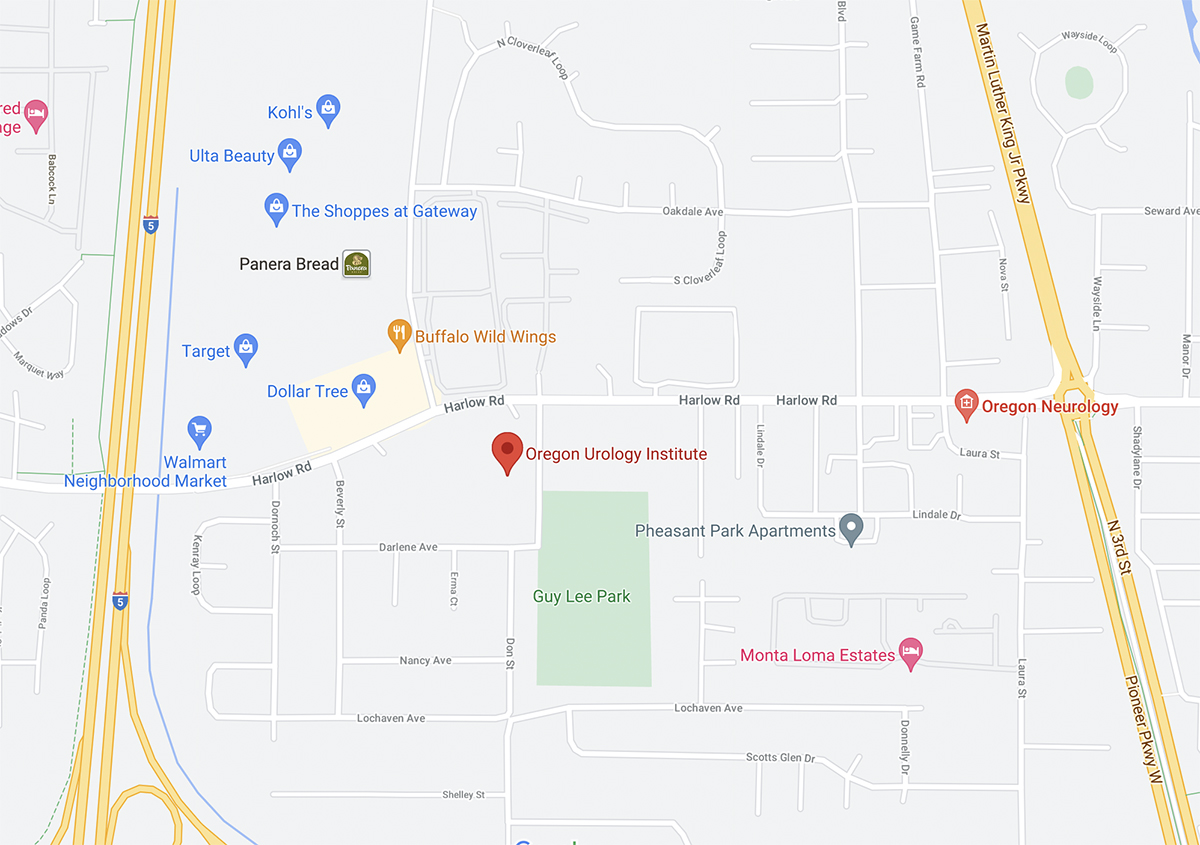SACRAL NEUROMODULATION

Overactive bladder (OAB) is a common condition affecting both women and men. Its main symptom is an intense, sudden urge to urinate. It can be such a strong feeling that accidents or leaks can occur. For some people, lifestyle changes or medication may be enough. For others, interventions like sacral neuromodulation are a better option.


WHAT IS SACRAL NEUROMODULATION?
The body has several major nerves that control a multitude of complex functions. The spinal nerves branch off from the spinal cord and exit the vertebrae. The sacral nerve, which can be found in the lower portion of the spine, is a large nerve with several functions, one of which is communication with the bladder. It sends signals to the brain to initiate voluntary urination. If this communication breaks down, you might experience disruptive bladder symptoms.
Signs and symptoms of bladder control difficulties include:
- Urge incontinence or a strong urge to void results in urine leakage
- Urinary retention or difficulty urinating
- Incomplete bladder emptying
- Urinary frequency, regardless of how full the bladder is
Sacral neuromodulation offers a solution for those who haven’t found bladder control relief through conventional treatment methods, such as:
- Fluid intake or dietary changes
- Medication
- Pelvic floor exercises or physical therapy
- Bladder training or scheduled voiding
HOW DOES SACRAL NEUROMODULATION WORK?
Sacral neuromodulation involves implanting a small neurostimulator device under the skin in the lower back area. The device is linked to wire leads that deliver mild electrical impulses, effectively stimulating the sacral nerves. Two types of sacral neuromodulation devices are the Axonics system and InterStim.
Sacral nerve stimulation resets nerve communication with the brain, improving bladder control. It often provides immediate and sustained relief, helping you resume activities and avoid frustrating symptoms.
FLEXIBILITY AND REVERSIBILITY OF TREATMENT
Axonics and other devices can be tailored to meet your unique needs, preferences, and lifestyle. In fact, therapy begins with a trial period, allowing you to make sure it’s the right solution for your needs before committing to a permanent implant.
Your doctor will assess your medical history, symptoms, and past treatments to determine if sacral neuromodulation is suitable for you.
The testing period lasts 3-7 days and utilizes an external stimulator system placed during a short procedure.
Throughout the testing period, you will keep track of symptoms. If they are improved or eliminated, you may be a candidate for a permanent implant.
IMPLANT PROCEDURE
The device is implanted during an outpatient procedure. It usually takes about 30 minutes and is often done with local or mild anesthesia. The device is positioned in the lower back above the buttocks.
The minimally invasive procedure allows you to return home the same day. Light activity is usually possible; however, following your doctor’s recovery advice is important.
AFTER THE DEVICE IS IMPLANTED
Regular check-ins with your doctor will ensure the device’s settings are optimized for continuous symptom management and improvement. Some people notice a slight tingling sensation, which typically subsides over several weeks but shouldn’t be painful.
The device settings are adjustable, allowing for a treatment plan that can be adapted over time to maximize effectiveness while minimizing side effects.
THE GOAL OF SACRAL NEUROMODULATION TREATMENT
Sacral neuromodulation therapy can dramatically improve quality of life by restoring control over bladder functions. Those who use these devices report less urgency, frequency, and incontinence that once disrupted their daily lives. Finally, being free from the constant worry and need to plan around restroom accessibility brings a welcomed sense of normalcy and freedom.
If you’re tired of letting your bladder dictate your life, it’s time to talk to one of our specialists about your symptoms and treatment options. Don’t let embarrassment or uncertainty hold you back. Our team is here to provide compassionate care and support.
Schedule an appointment to explore how treatments like this can help you regain control and confidence.
FAQs
How long does the battery in the device last?
The battery’s longevity can vary depending on several factors, including the settings used for stimulation. Typically, a non-rechargeable battery may last between 3 and 5 years. Some types have rechargeable options that can last much longer, potentially up to 15 years. To recharge, you simply remove the recharger from the dock and wear it in a recharging belt for 20 minutes once a week.
Is the procedure painful?
The implantation is minimally invasive. It causes little discomfort and is effectively managed with local anesthesia during the procedure and pain relievers during recovery.
Do I have OAB?
There are a range of symptoms and lifestyle hindrances associated with overactive bladder, including:
- A strong, immediate urge to urinate. This is often described as a sudden and overwhelming need, which can happen at any time, making it difficult to predict and manage daily activities.
- Frequent urination. Needing to urinate more than eight times within 24 hours is inconvenient and considered more often than average. Excessive trips to the bathroom can become increasingly disruptive.
- Nocturia. Waking up multiple times during the night to urinate interrupts sleep patterns and leads to sleep deprivation.
- Urinary Incontinence. You may have unexpected urine leakage, ranging from light dribbles to more significant amounts. This can happen with or without a sense of urgency.
- Difficulty participating in activities. Having to stay close to bathrooms or planning activities around restroom access can limit freedom, spontaneity, and enjoyment.
- Dehydration. Avoiding fluids to reduce the urge to urinate or monitoring intake to try to control symptoms can lead to dehydration.






